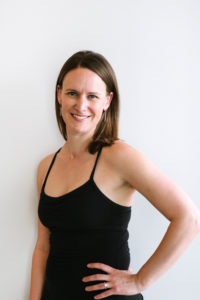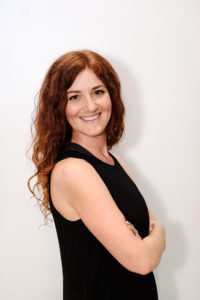February 12th, 2018

“But I feel like I’m not doing anything!”
– Power yogi taking a Restorative class for the first time
“That was way too fast! I was so confused!”
– Restorative yogi taking a Vinyasa class for the first time
“I can’t breathe! I’m going to die! I think my neighbor’s sweat just landed in my eye!”
– Pretty much anyone taking a hot yoga class for the first time
I’ve heard all of these more times than I can count, and I’ve said similar things myself! These statements demonstrate our willingness to try (at least once) a different style of yoga. They often are markers of the end of the road for us and a particular style of yoga.
Do you know how many kinds of yoga we have in this country? Good for you if you know, because I sure don’t. New cross-breeds of yoga are being “invented” in the U.S. seemingly every year (e.g. Ganjasana yoga experiences in our own Colorado), while others get phased out (e.g. Anusara yoga). In American culture, if we want something that doesn’t exist, we simply create it and put a business model to it, and yoga is no exception. On the one hand, this entrepreneurial and problem-solving spirit is admirable and highlights our exceptional creativity and ingenuity! On the other, however, it does not push us to grow, at least in yoga. If we’re constantly creating that “missing piece” for ourselves, that style of yoga that we crave, we’re missing out a key element of our yoga path : the yoga we need.
Yoga is a PROCESS.
Yoga, like that old saying about life, is a journey, not a destination. There is no end to our practice, as it is entirely process-driven. It’s a process of discovery, at its core : discovery of the absolute awesomeness that is our body and discovery of how we speak to the body we bring to our mat on any given day. Because our bodies are constantly changing with age, stress, other physical activities, etc., the opportunity to learn about “the body on my mat today” is ever-changing. The easiest part of the process is figuring out what we want.
What do you want?
The yoga we want is typically the style we practice! It’s the style we practice on a regular basis. We don’t really have to think about it; rather, we just know we like it. Here, our mind takes over with a “Give me that vinyasa class!” or “I just need to chant right now” rhythm.
What do you need?
Figuring out what your body needs, however, is more difficult and involves some self-discovery. I’ll use runners as an example : Typically, runners crave a power vinyasa practice. They love the challenge, and they love the sweat. Marathoners, in particular, relish the feeling of a good butt-whooping! Power vinyasa meets the mental need of a challenge, and it also meets the physical need of cultivating greater lung capacity through breath work and creating greater flexibility to help stave off injury. This is all wonderful, and it is part of the whole picture. But what about what that marathoner needs?
More often than not, the marathoner will be a high energy individual. He or she will have intense, laser-like focus on their goals….and you can see that in their poses. Their warriors actually look fierce! (Look out!) A marathoner might be the one who goes to an Iyengar class and claims, “but it’s so slow!” and never return, not understanding that Iyengar’s attention to alignment detail is an intense discipline that can help running form and, therefore, increase efficiency. In a restorative class they might say, “but I’m just lying there! I’m not doing anything!” not understanding that learning to mentally cultivate stillness and to relax into the props are precisely what can push them through the challenge of “the wall”.
That outlines one group : runners. But we all belong to a group, to a style where we feel comfortable (because it’s want we want), and to a style that brings discomfort (that could be the key to what we need).
Pursue the process
It’s time to look inward. What styles of yoga you have tried and didn’t “like”? Why didn’t you like them? Sure, maybe they’re just not for you–not all styles are right for everyone. Consider the possibility, however, that they hit at what you need, but you weren’t ready to go there yet. Think about the styles of yoga or the specific classes you haven’t tried. Ask about them! Learn! Get uncomfortable! Approach your practice as a process of learning what you want and speaking to that; discovering what you need and speaking to that. As you learn and grow, and as your body changes and your life evolves, continually reevaluate and renew the process. It is in the combination of those two elements–wants and needs–that we create a whole practice and speak to our whole selves.
And while you get out there and try something new, remember it’s always okay to laugh in the midst of those “What the heck is this?” moments! Yoga should be fun, after all!
Why restore flow is the yoga I need
Meraki Instructor Alyse Smith
We live in a society and culture that values DOING over BEING. When I first found yoga, I was drawn toward the intensity and physical challenge, but what kept me going was the mostly unfamiliar peace of just BEING that I began to experience. Over the years, my yoga practice has evolved greatly. I still love a good hot, sweaty vinyasa practice – but as my lifestyle and responsibilities have shifted, so have my needs and my yoga practice.
As a mom, wife, daughter, yoga instructor, and creative business owner I often feel like I’m approaching depletion and now, more so than ever, my main health and well-being goals are to provide my body and spirit the time needed to restore and refresh. If i truly listen to my higher self, what I need most is a gentle and restorative yoga practice to balance the chaos of life. This time to slow down provides my nervous systems the opportunity to reset. Giving myself the space to still my mind and body is one of the most challenging things I’ve had to learn how to do on my mat. But, it is in these moments that I find clarity, fresh insight, and true peace. When I reach this meditative state the benefits are lasting and I leave my mat with a higher perspective and a deeper appreciation for the blessings of my life. I feel rested, open, and ready for whatever comes my way.
These days, life is fast, and lately I prefer my yoga slow.

Article written by Meraki teacher Erin Hoffman
Join Erin on Thursdays at 5.45pm for Vinyasa 1

Testimonial written by Meraki teacher Alyse Smith
Join Alyse on Wednesdays at 1.15pm for Restore Flow
